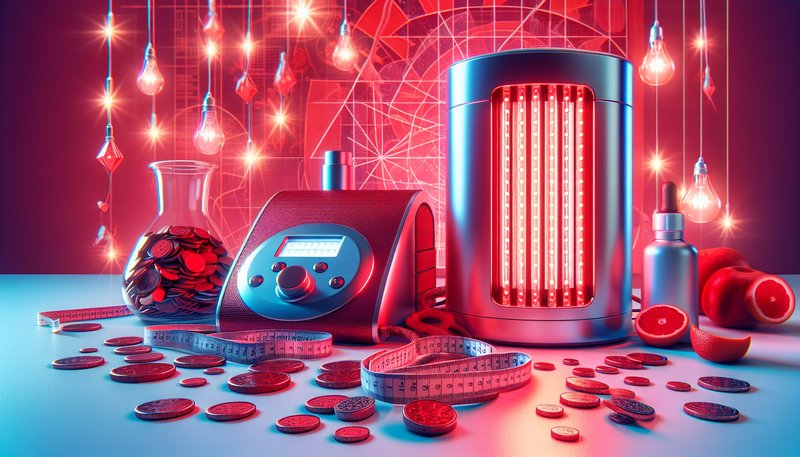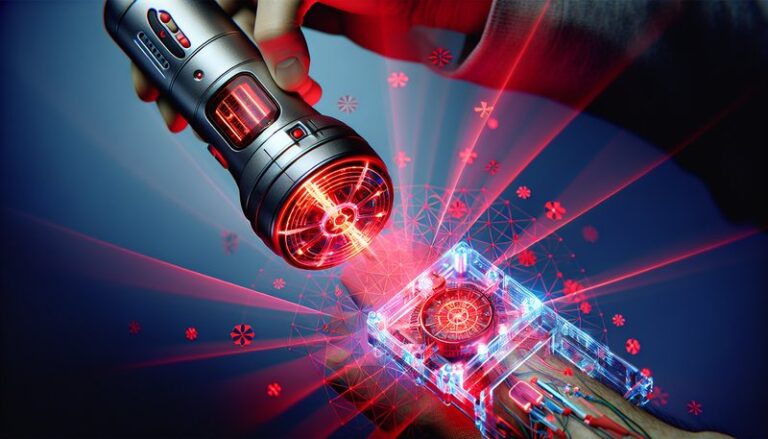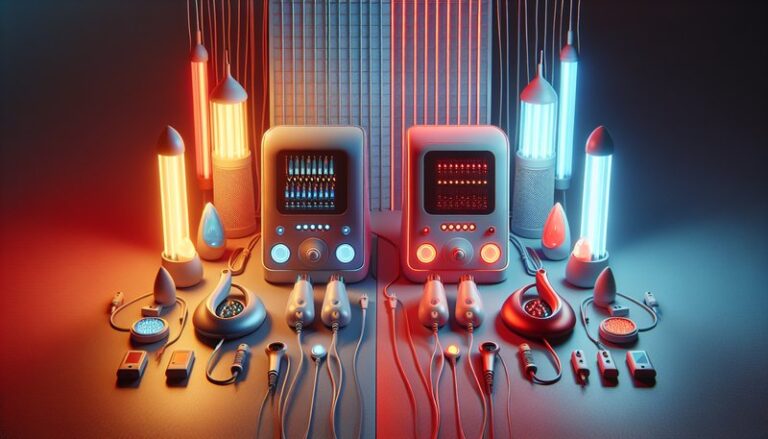How Does Red Light Therapy Help You Lose Weight?
How Does Red Light Therapy Help You Lose Weight?
Are you exploring innovative methods for weight loss? Red light therapy could be the answer you’ve been searching for. This emerging technique utilizes specific wavelengths of light to potentially aid weight loss and enhance overall wellness.
This article will unravel the science behind red light therapy, detail its benefits for weight loss, and discuss considerations, alternatives, and common questions related to this intriguing approach.
Key Takeaways
- Red light therapy may enhance metabolism and promote fat loss through cellular stimulation.
- It offers additional health benefits that go beyond weight management, such as improved skin health and reduced inflammation.
- While effective, it should be complemented with a healthy diet and regular exercise for optimal results.
What is Red Light Therapy?
Red light therapy (RLT) is a non-invasive treatment that involves exposure to low levels of red or near-infrared light. This light is thought to penetrate the skin and stimulate the mitochondria, the powerhouse of cells, leading to increased energy production and various health benefits.
RLT has received attention in recent years due to its versatility, being used for skin rejuvenation, pain relief, and muscle recovery. The weight loss angle stems from its ability to enhance cellular function and improve metabolic processes.
What are the Benefits of Red Light Therapy?
The following advantages outline how red light therapy may assist in weight management and overall better health.
Learn the full details in Do Blue and Red Light Therapy Work for Acne?
Enhanced Metabolism
Red light therapy can stimulate the mitochondria, potentially leading to increased energy expenditure and improved metabolic rate. This can result in the body efficiently burning more calories, supporting weight loss.
Fat Loss Support
RLT may facilitate the reduction of subcutaneous fat. Studies suggest that red light exposure may lead to adipocyte apoptosis (fat cell death), which can contribute to decreased body fat.
Improved Skin and Muscle Recovery
While primarily focusing on weight loss, red light therapy also aids in skin health and muscle recovery. Improved recovery can lead to more effective workouts, indirectly supporting weight loss efforts.
Reduced Inflammation
Chronic inflammation can hinder weight loss. Red light therapy has been shown to reduce inflammation, thus aiding in creating an environment that promotes healthy weight management.
Is it Possible to Use Red Light Therapy for Weight Loss?
Absolutely! Many individuals report success with RLT as a supportive therapy for weight loss. However, it’s crucial to understand how it fits into a broader lifestyle strategy.
What are the Advantages of Using Red Light Therapy?
- Non-Invasive: Unlike surgery or medication, RLT is a safe, non-invasive treatment.
- Minimal Side Effects: Most users experience few, if any, adverse effects. It’s generally well-tolerated when used correctly.
- Convenient Treatments: RLT sessions can often be conducted in the comfort of your home or in a clinical setting.
What are the Disadvantages of Using Red Light Therapy?
- Time Commitment: Achieving results may require regular sessions over time.
- Equipment Costs: High-quality red light devices can be expensive.
- Not a Standalone Solution: It should not replace traditional weight loss methods like diet and exercise.
What are the Things to Consider Before Starting Red Light Therapy?
Before embarking on your red light therapy journey, consider the following factors:
Consultation with a Healthcare Professional
Always consult with a healthcare provider to ensure that red light therapy is a suitable option for your health status and weight loss goals.
Quality of Equipment
Choose high-quality, scientifically validated red light devices. Lower quality devices may not deliver effective treatments.
Consistency is Key
Just like with any weight loss strategy, consistency is crucial. Adhering to a regular RLT schedule can help maximize results.
Complement with Healthy Lifestyle Choices
Effective weight management should include a balanced diet and regular physical activity in conjunction with red light therapy to yield the best results.
What are the Alternatives to Red Light Therapy?
If red light therapy doesn’t seem right for you, consider these alternatives:
Laser Therapy
Similar to RLT but uses laser light to target fat cells specifically. It’s often used in clinical settings.
Cryotherapy
Cryotherapy involves exposing the body to extremely cold temperatures to boost metabolism and promote weight loss.
Whole-Body Vibration Therapy
This technique uses vibrations to stimulate metabolic activity in the body, helping with fat loss and muscle toning.
Dietary Supplements
Certain supplements may support metabolism and weight loss, but they should be used responsibly and with professional guidance.
Discover our insights When Does Red Light Therapy Work?
Conclusion: Is it Recommended to Use Red Light Therapy for Weight Loss?
While red light therapy shows promise as a weight loss support method, it is essential to approach it as part of a comprehensive lifestyle program that includes healthy eating and regular exercise. Consulting with healthcare professionals and choosing reputable equipment can maximize effectiveness and safety.
Frequently Asked Questions
Can red light therapy replace diet and exercise for weight loss?
No, red light therapy should complement a healthy diet and physical activity, not replace them.
How often should I use red light therapy for weight loss?
Most practitioners recommend 3-5 sessions per week, but individual needs may vary.
Are there any side effects of red light therapy?
Side effects are generally mild and may include temporary redness or warmth in the treated area.
How long does it take to see results from red light therapy?
Results can vary, but many users report seeing changes within 4-6 weeks with consistent use.
Is red light therapy safe for everyone?
While generally safe, individuals with specific health conditions or who are pregnant should consult a healthcare provider before using red light therapy.






